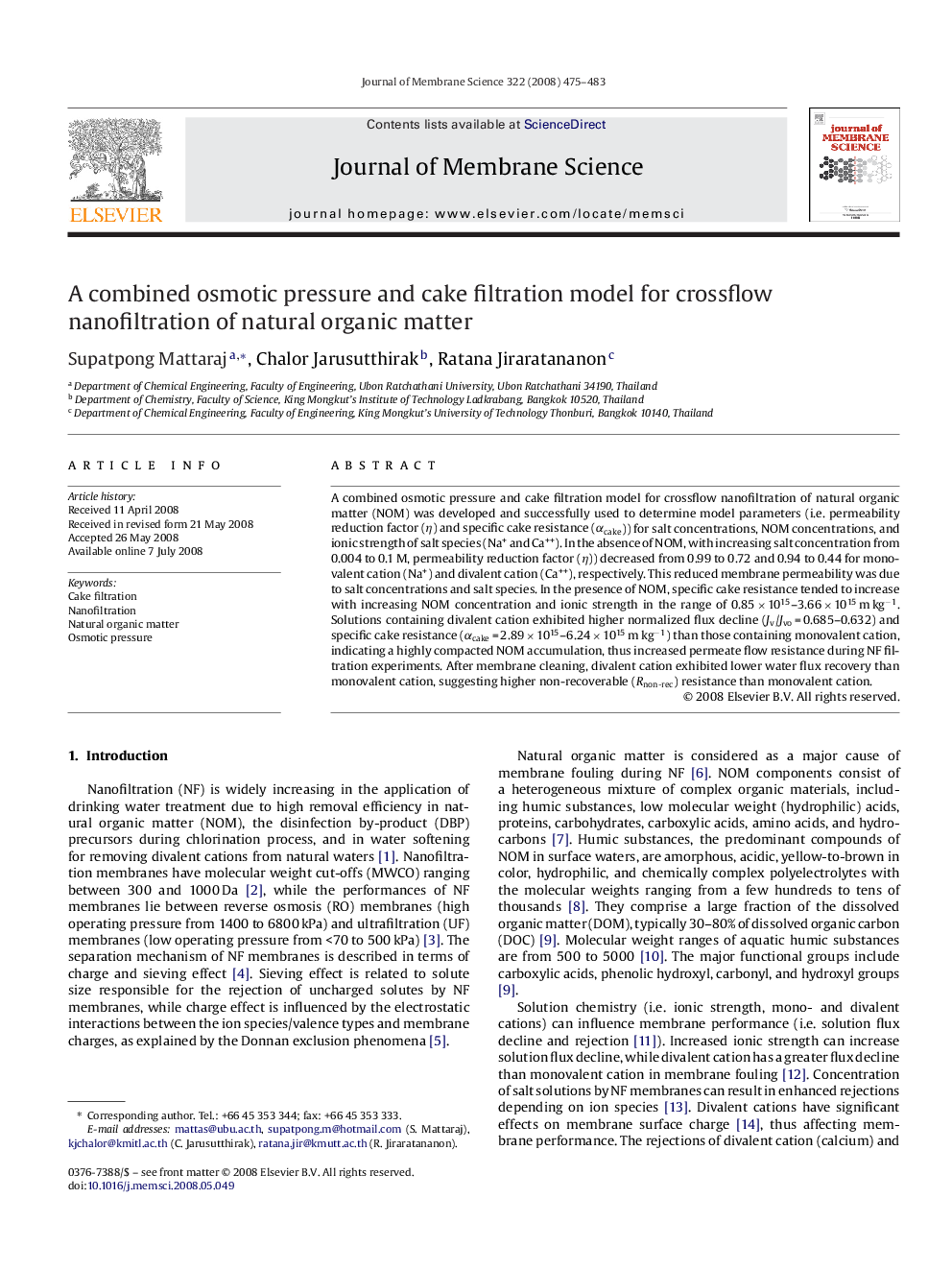| Article ID | Journal | Published Year | Pages | File Type |
|---|---|---|---|---|
| 637664 | Journal of Membrane Science | 2008 | 9 Pages |
Abstract
A combined osmotic pressure and cake filtration model for crossflow nanofiltration of natural organic matter (NOM) was developed and successfully used to determine model parameters (i.e. permeability reduction factor (η) and specific cake resistance (αcake)) for salt concentrations, NOM concentrations, and ionic strength of salt species (Na+ and Ca++). In the absence of NOM, with increasing salt concentration from 0.004 to 0.1 M, permeability reduction factor (η)) decreased from 0.99 to 0.72 and 0.94 to 0.44 for monovalent cation (Na+) and divalent cation (Ca++), respectively. This reduced membrane permeability was due to salt concentrations and salt species. In the presence of NOM, specific cake resistance tended to increase with increasing NOM concentration and ionic strength in the range of 0.85 Ã 1015-3.66 Ã 1015 m kgâ1. Solutions containing divalent cation exhibited higher normalized flux decline (Jv/Jvo = 0.685-0.632) and specific cake resistance (αcake = 2.89 Ã 1015-6.24 Ã 1015 m kgâ1) than those containing monovalent cation, indicating a highly compacted NOM accumulation, thus increased permeate flow resistance during NF filtration experiments. After membrane cleaning, divalent cation exhibited lower water flux recovery than monovalent cation, suggesting higher non-recoverable (Rnon-rec) resistance than monovalent cation.
Related Topics
Physical Sciences and Engineering
Chemical Engineering
Filtration and Separation
Authors
Supatpong Mattaraj, Chalor Jarusutthirak, Ratana Jiraratananon,
